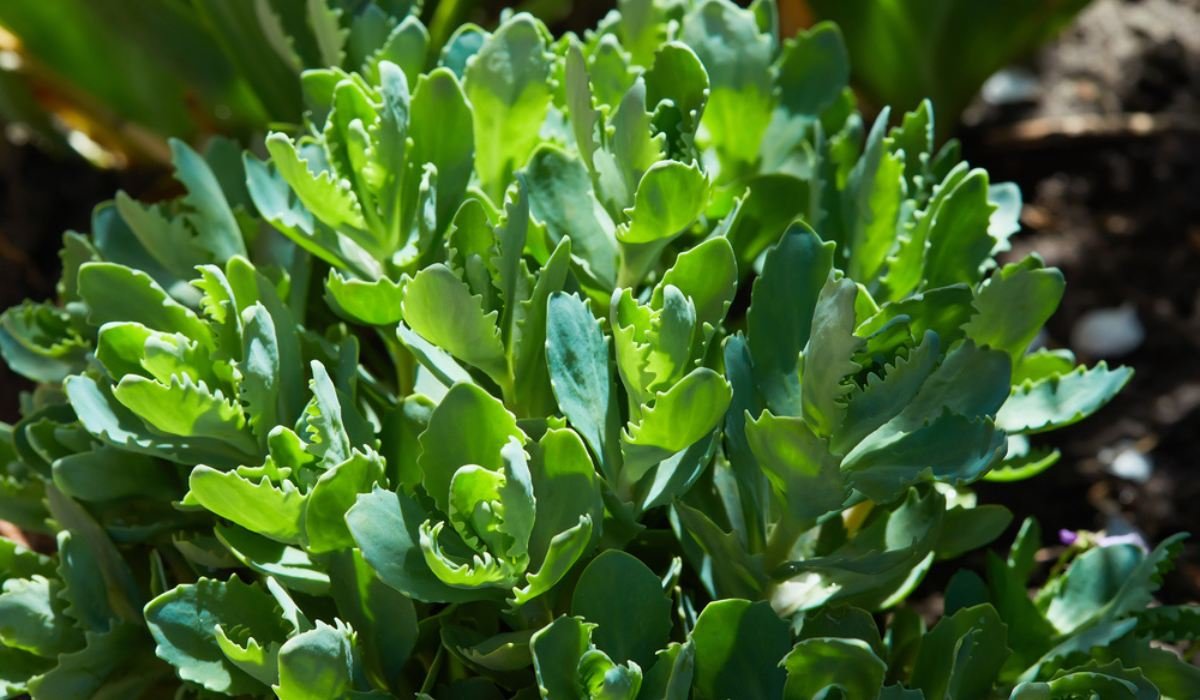Ice plants are a variety of succulents that bear flowers. These plants are native to Africa and are known to grow in arid areas. They can survive for a long time without water since their water requirements are low.
Presently, they are commonly grown around the world due to their beauty and health benefits. They can grow both indoors and outdoors but are intolerant to rain and flooding.
See also: Epiphyllum oxypetalum: Benefits, medicinal uses, and plant care

Source: Pinterest
Ice plants have small and plump leaves that appear to be fleshy. The flowers look like daisies but have thinner and more petals. These plants flower in multiple numbers, and the plant spreads around as it matures. It doesn’t grow above a few centimetres and stays close to the ground.
Read about Epiphyllum
Key facts about Ice plant
| Name | Ice plant |
| Family | Aizoaceae |
| Origin | Africa |
| Type | Succulent |
| Indoor/Outdoor | Both |
| Soil | Dry and sandy soil |
| Sunlight | Full sun with partial shade |
| Temperature | 10-35°C |
| Water | Infrequent |
| Fertiliser | Slow-release fertiliser or compost |
| Pet-friendly | Yes |
How to propagate Ice plants?
- It is possible to transplant newly rooted ice plants naturally by snipping the stem and digging them up carefully. Additionally, they can be propagated by division.
- This will not only result in a cost-effective new plant, but it can also revive an old one.
- Plants should be divided in the spring when they are mature.
- Avoid damaging the roots as much as possible when digging up the plant.
- In order to facilitate root removal, it is helpful to moisten the soil beforehand.
- Cut the plant in half at the roots with a sharp spade.
- Each portion of the new plant must be planted at the same depth as the original one.
- Lightly moisten the soil by gently patting it down.
Care tips for Ice plants
Ice plants are not very high maintenance but can be difficult to grow in moist weather conditions. They do not like a soggy environment and hate moist soil. Succulents usually require utmost care when watering because they can get overwatered very easily. When setting up a watering schedule for the plant, make sure you check if the topsoil is dry.
Additionally, always place these plants in pots with multiple drainage holes so that excess water can flow out. Don’t let water droplets become stagnant on the leaves. This may cause the leaves and flowers to rot. It is recommended to water them at the base instead of using a sprinkler or a spray bottle.

Source: Pinterest
You can easily grow ice plants outdoors. However, make sure to get them inside when it rains. Rain can kill ice plants since succulents don’t like too much water. They can thrive in both hot and cold weather conditions.
Fertilising them will be necessary in the growing season. You can use simple compost in small amounts to fertilise ice plants. If you do not have proper succulent mixes or have mistakenly used clayey soil, you can always add sand and perlite to make it more permeable.
Ice plants benefits
Ice plants are a great addition to your garden. These plants look extremely beautiful, especially when they bloom. They are coveted by many hobbyists and can be a signature collection in your home. Ice plants also have some amazing health benefits that make them even more useful.
In ancient medicine and Ayurveda, the plant has been used for its anti-inflammatory and antipyretic properties. You can easily use this plant to combat certain health conditions as long as your doctors say it’s safe. It is specially used in skin care products and sunscreens due to its benefits to the skin.

Source: Pinterest
Here are some of the top health benefits of the plant that make it a useful variety among succulents:-
Provides relief from pulmonary tuberculosis
The juice of ice plant fruits is well known to aid people with pulmonary tuberculosis. This transmissible bacterial infection can take a significant amount of time to heal. It is also pretty useful to find relief from bronchitis.
Promotes cardiovascular health
Since ice plants have anti-inflammatory properties, it’s a great fix for heart inflammation. The herb can also keep high blood pressure at bay and decrease the levels of bad cholesterol in the body.
Solves skin problems
Ice plants are also used to provide relief from skin problems. The sap of a common ice plant can cool down inflamed areas and soothe parts of the body that are irritated. They are also commonly used in making sunscreens as they offer protection from UV rays. Allergies and thrombus wounds can also be cooled using extracts from ice plants.
Treats constipation
Ice plants have been used in ancient and folk medicine to cure problems of constipation. The fruit of the plant has laxative properties that can promote the working of the digestive system and clear constipation.
FAQs
Is an ice plant poisonous?
Dead ice plants are poisonous. However, some varieties of fresh plants are edible.
Can ice plants be eaten raw?
Yes, some ice plant varieties can be eaten raw. When they are fresh, they can be moderately tasty and won't cause stomach issues.
Is an ice plant harmful to dogs?
Ice plants are completely pet-friendly and safe for dogs. Pet parents can have them at home without any problem.
Housing News Desk is the news desk of leading online real estate portal, Housing.com. Housing News Desk focuses on a variety of topics such as real estate laws, taxes, current news, property trends, home loans, rentals, décor, green homes, home improvement, etc. The main objective of the news desk, is to cover the real estate sector from the perspective of providing information that is useful to the end-user.
Facebook: https://www.facebook.com/housing.com/
Twitter: https://twitter.com/Housing
Email: [email protected]











